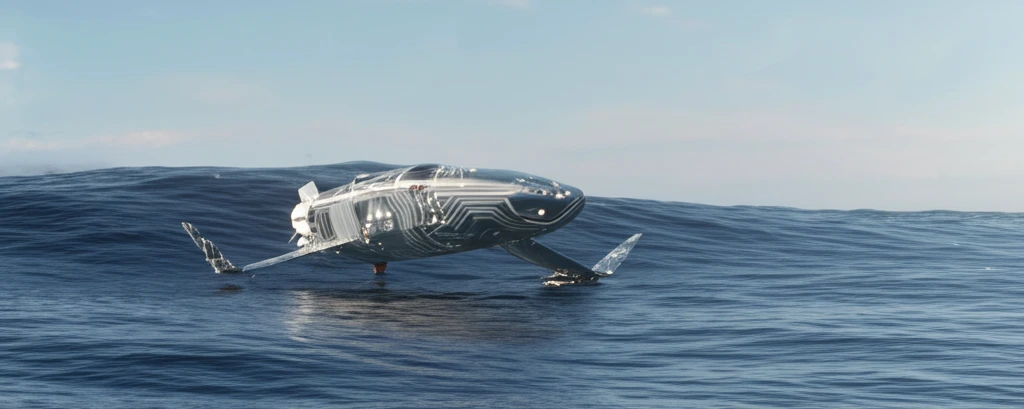
Wave Gliders: How AI-Powered Navigation Can Revolutionize Ocean Exploration
"Dive into the Future of Maritime Technology: Discover how artificial intelligence is optimizing unmanned wave gliders for efficient and eco-friendly ocean research."
Oceans, covering over 70% of our planet, remain largely unexplored. Traditional methods of ocean monitoring, reliant on fuel or batteries, are limiting due to energy constraints, high costs, and environmental concerns. This situation is driving the development of innovative technologies such as unmanned wave gliders (UWGs) to overcome these limitations.
Unmanned wave gliders represent a significant leap forward in maritime technology. They harness wave energy for propulsion, offering near-limitless endurance, reduced operational costs, and zero emissions. These advantages make them ideal platforms for various scientific and survey activities, from climate monitoring to marine resource management.
The integration of artificial intelligence (AI) is further enhancing the capabilities of UWGs. AI algorithms can optimize navigation, adapt to changing ocean conditions, and improve the accuracy of data collection. This article explores how AI is revolutionizing wave glider technology, making ocean exploration more efficient, sustainable, and insightful.
How AI is Transforming Wave Glider Navigation

A significant challenge in UWG technology is motion control. Unlike traditional vessels, UWGs have unique structural and operational characteristics, making motion modeling and control particularly complex. Researchers are actively developing AI-powered solutions to address these challenges, focusing on optimizing navigation and adapting to unpredictable ocean conditions.
- Artificial Fish Swarm Algorithm (AFSA): Inspired by the foraging behavior of fish schools, AFSA is an AI technique used to optimize complex systems. In the context of UWGs, AFSA helps identify optimal parameters for heading control, allowing the glider to navigate efficiently.
- Model Identification: The AI algorithm uses data from tank tests and real-world trials to create a dynamic model of the UWG's motion. This model accounts for various factors, such as wave conditions, glider dynamics, and control inputs.
- Parameter Optimization: Once the model is established, AFSA optimizes the control parameters, enabling the UWG to maintain its desired heading with precision. This optimization process leads to improved energy efficiency and navigation accuracy.
The Future of Ocean Exploration is Here
AI-powered wave gliders are poised to revolutionize ocean exploration, offering a sustainable and efficient alternative to traditional methods. As AI algorithms continue to evolve, we can expect even greater advancements in UWG technology, unlocking new possibilities for understanding and protecting our oceans. The combination of wave glider technology and AI not only improves operational efficiency but also promotes a more environmentally conscious approach to marine research.
